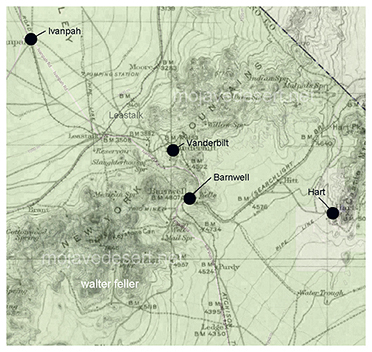Hart
The fall of 1907 was a poor time for mining. A short but severe depression began in October. Banks and mining company were especially hard hit.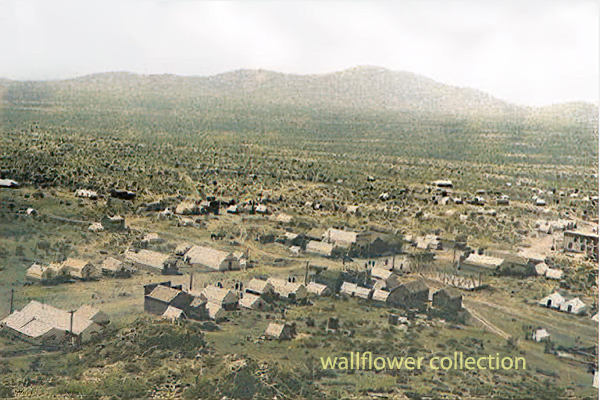
It remained for three prospectors from Goldfield-James Hart and the brothers Bert and Clark Hitt-to recognize the possibilities of a rhyolite formation that resembled the gold-bearing outcrops of western Nevada. The Castle Mountains, the trio found pockets of rich ore and located several abandoned claims in late December of 1907. Their claims became the Oro Belle and Big Chief mines. Tipped off by the discoverers, George A. Foster, a young broker in Goldfield, snapped up a group of claims and laid out a townsite in a basin below the properties. He named the site Hart. (A siding and freight house on the Barnwell & Searchlight Railroad, about four miles north, would soon be named Hitt.)
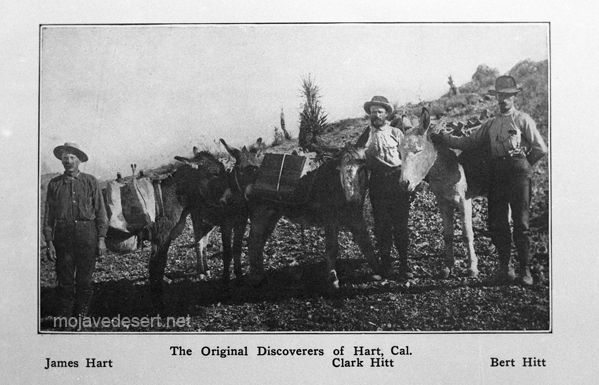
In early January of 1908, the district began to boom. Two stores in nearby Searchlight opened branches in Hart; telephone lines were strung to Barnwell; J. B. Flanagan, the publisher of the Searchlight News, began issuing a small, four-page weekly, the Hart Enterprise (although he waited several months before moving the plant); a townsite was surveyed; and a four-mile pipeline from Malapais Springs were completed. A post office opened in late April. By July, Hart had an estimated population of 400. The business district embraced two hotels (both of them two stories), a rooming house, two general stores, one bookstore, a real-estate office, a candy store, two lumberyards, a combination bakery and restaurant, and eight saloons. Among the utilities were the water line, the post office, telephone and telegraph service, and stage and auto lines to Searchlight and Hitt.
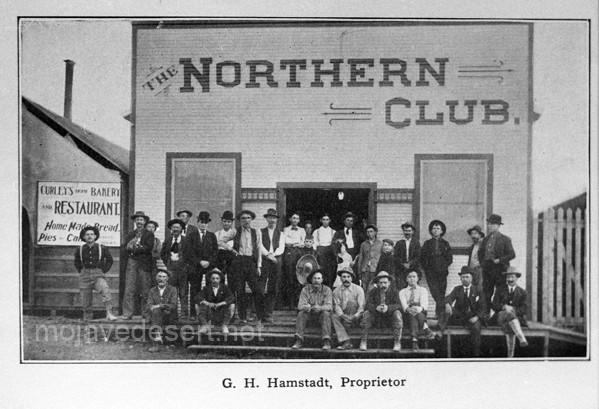
But Hart boomed too fast. Claim-jumping and swindling had become common as early as January. In February, three men from Searchlight sued the Foster brothers over the validity of their claims. In response, some of the leading citizens organized a Business Men’s League, which limited the sale of liquor and enforced police and fire regulations. The league’s law-and-order committee discouraged gamblers, toughs, and wildcat promoters from moving into the camp. Finally, the San Bernardino County Board of Supervisors organized a judicial district in early March and appointed a justice of the peace and a constable. The supervisors then granted nine liquor licenses, created a voting precinct, and, in early April, approved an official townsite.
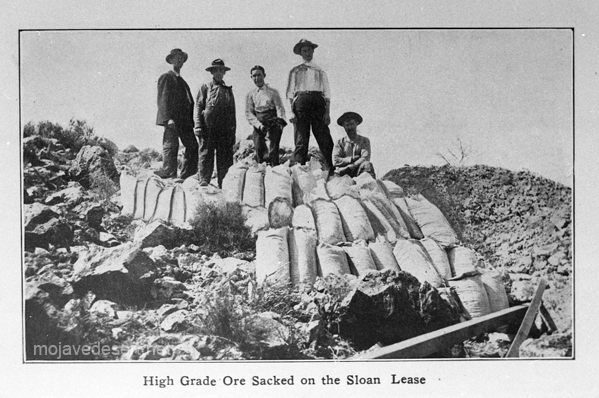
Milling, however, became a problem. In May, 1908, Hart, the Hitt brother, and Foster shipped in a 10-stamp mill from Goldfield and erected it near the Big Chief Mine. But the heavy machinery shook apart the foundation, which had been poorly laid. The mill had to be modified and didn’t start up again until November. A Searchlight mill ended up processing most of Hart’s best ore.
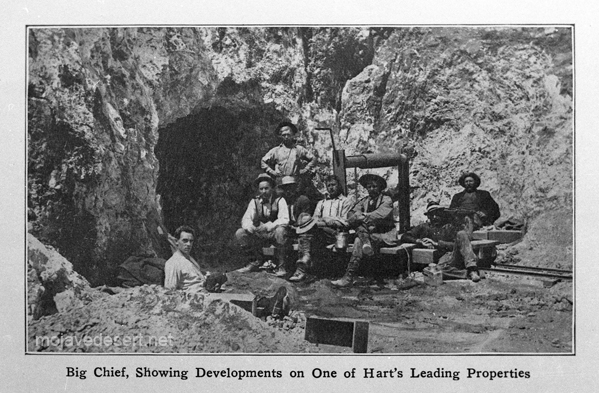
The leading mines, however, were better developed. The Oro Belle, owned by James Foster and the Hitt brothers, had a 1,000-foot tunnel and a 200-foot shaft. The shaft at the Big Chief, owned by George Foster, extended several hundred feet. Several others, including Harry S. McCallum, who headed the Business Men’s League, owned the Hart Consolidated. The mine owners, however, granted many leases, which accounted for much of the production.
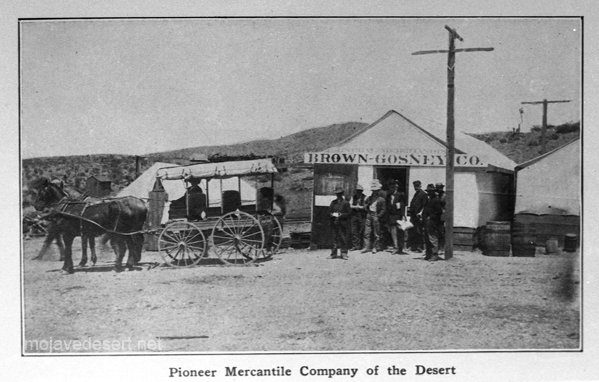
A local of the Western Federation of Miners was organized in early 1908; by July, it numbered 44 members. During the most productive years, laborers and surface workers received $4 a day, underground workers $4.50, and carpenters $6—comfortable wages for the time.
The district began to decline in 1909; the veins at the Big Chief and Oro Belle remained narrow and broken. In November, 1909, Flanagan suspended the Enterprise. Only 40 people remained by early 1910. In January of 1911, a fire destroyed half of the town—mostly vacant buildings. A month after the fire, one merchant restocked and moved his store into a vacant building. Later that year, W. B. Andrews, the manager of the Oro Belle, tried to drill a well, lay a water line, and build a tube mill, which was designed to recover 96% of the gold and silver in the ore. Andrews completed the pipeline, but nothing else materialized. After intermittent production, both the Oro Belle and Big Chief shut down in 1913, and the union local was disbanded. A company in Tonopah, Nevada, worked the Oro Belle for a while, but that was the last hurrah. The post office closed in December of 1915. Up to early 1919, the mill, three furnished saloons, hotels, restaurants, laundry, the office of the Enterprise, and many houses still stood.
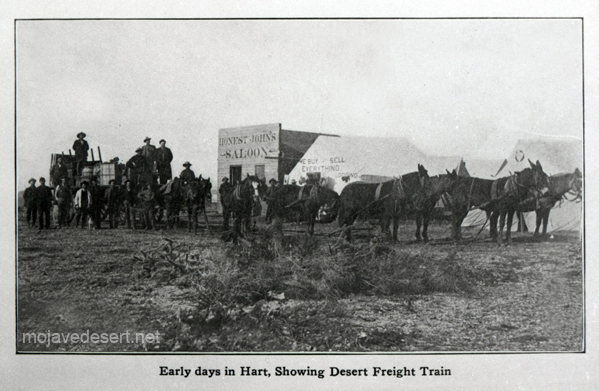
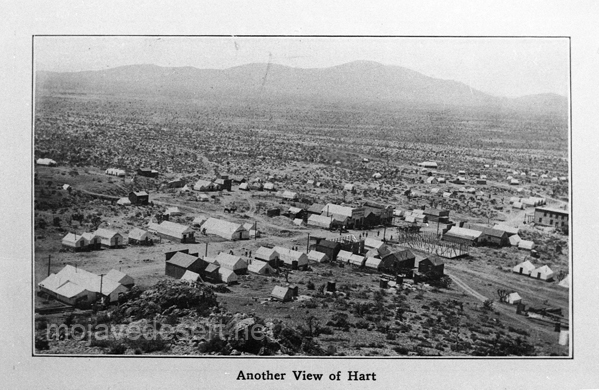
Mining at Hart
